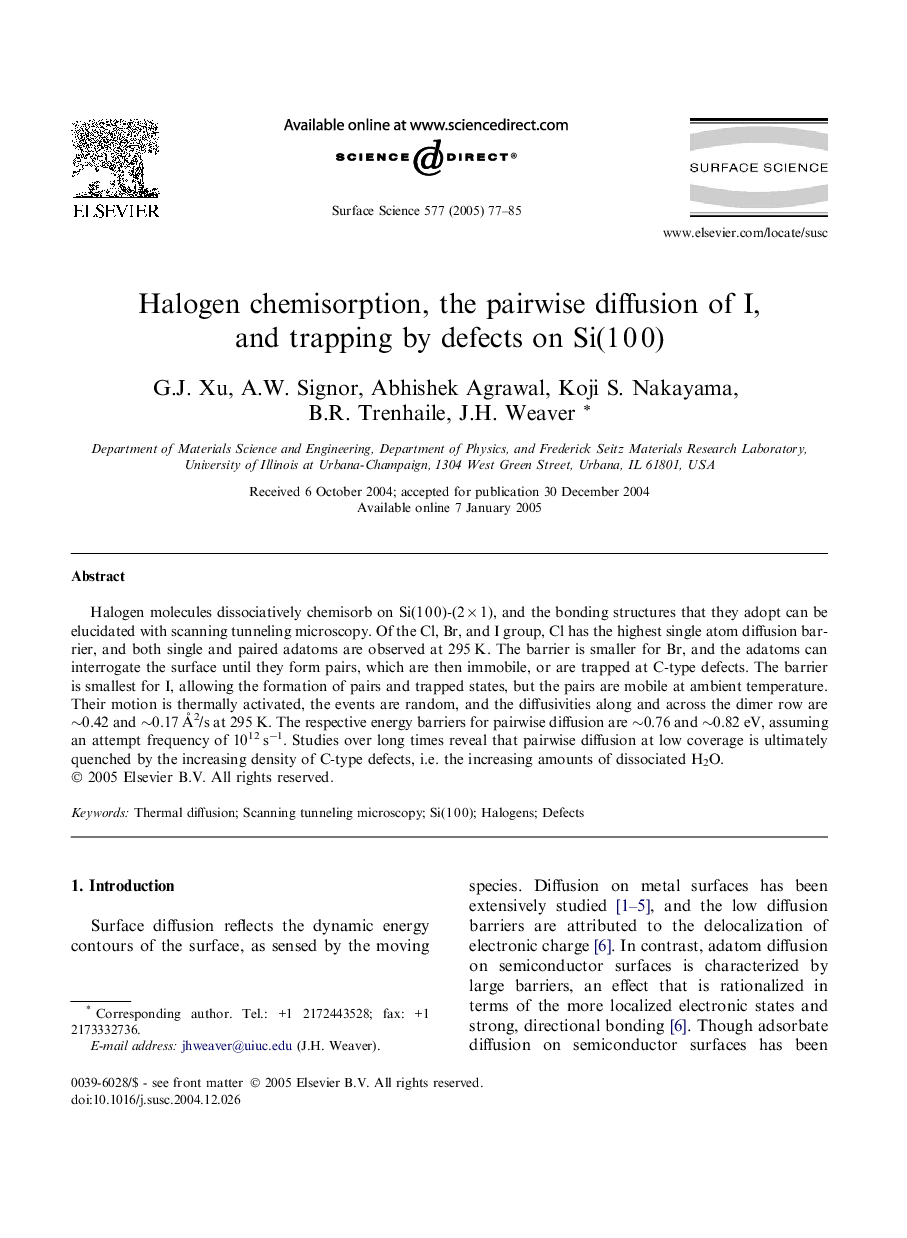| Article ID | Journal | Published Year | Pages | File Type |
|---|---|---|---|---|
| 9594880 | Surface Science | 2005 | 9 Pages |
Abstract
Halogen molecules dissociatively chemisorb on Si(1Â 0Â 0)-(2Â ÃÂ 1), and the bonding structures that they adopt can be elucidated with scanning tunneling microscopy. Of the Cl, Br, and I group, Cl has the highest single atom diffusion barrier, and both single and paired adatoms are observed at 295Â K. The barrier is smaller for Br, and the adatoms can interrogate the surface until they form pairs, which are then immobile, or are trapped at C-type defects. The barrier is smallest for I, allowing the formation of pairs and trapped states, but the pairs are mobile at ambient temperature. Their motion is thermally activated, the events are random, and the diffusivities along and across the dimer row are â¼0.42 and â¼0.17Â Ã
2/s at 295Â K. The respective energy barriers for pairwise diffusion are â¼0.76 and â¼0.82Â eV, assuming an attempt frequency of 1012Â sâ1. Studies over long times reveal that pairwise diffusion at low coverage is ultimately quenched by the increasing density of C-type defects, i.e. the increasing amounts of dissociated H2O.
Related Topics
Physical Sciences and Engineering
Chemistry
Physical and Theoretical Chemistry
Authors
G.J. Xu, A.W. Signor, Abhishek Agrawal, Koji S. Nakayama, B.R. Trenhaile, J.H. Weaver,
